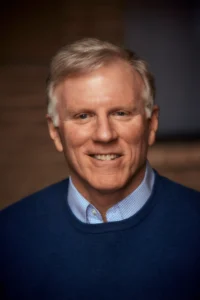Key takeaways:
- Corporate responsibility leaders are leaning on rubrics and scoring models to lay the foundation for their disaster response, keeping in mind these tools help add objectivity and credibility to your strategy but are not hard and fast rules.
- Responding to complex sociopolitical and humanitarian crises presents a different set of challenges. It’s essential that your response is aligned with key stakeholders such as legal, PR, public policy, leadership, etc.
- Today, there are too many disasters to respond to each one, but supporting partners like the American Red Cross’ ADGP year-round to build preparedness and long-term resilience can allow you to maximize your impact.
Disaster relief has come to be a pretty well-established function of corporate social responsibility. But what about a world where we’re told we can expect more frequent and intense natural disasters?
2023 was a record-breaking year for natural catastrophes in the U.S., with over 20 individual billion-dollar weather and climate disasters.
It’s no surprise that the past couple of years have stretched many corporate disaster relief programs in ways companies never anticipated. Given reports that extreme weather events like heatwaves, floods, and droughts will intensify as global warming continues, we can expect this trend to continue.
How are corporate responsibility leaders preparing for a world where disasters are not what they used to be?
Recently, the ESG & CSR Board brought together disaster response leaders from FedEx, PayPal, Amazon Web Services, and Cisco to discuss how they’re positioning strategies for the potential of more and worse disasters.
1. Developing a Response Rubric Can Enable Strategic Decision-Making
Today, natural disaster season feels year-round, and regardless of how large your company is, you can’t reasonably respond to every crisis that comes down the pipeline.
Still, when stakeholders ask tough questions about why you helped in one scenario and not another, you need credible answers.
Response rubrics or frameworks can enable you to remain strategic and limit risk when making those difficult and oftentimes emotional decisions/
During the panel, Future-Proofing Your Disaster Relief Strategies, panelists shared how they leverage scoring models and rubrics to help define their disaster response.
Karen Little, Senior Lead for Rapid Response and Strategic Partnerships at PayPal, said their scorecard is an ever-evolving “art-science” that takes a number of different factors into consideration.
Those factors can include:
- Are customers impacted by the crisis?
- Are employees impacted by the crisis?
- Was there a loss of life?
- Do employees care deeply about the event?
Karen shared that filling out the scorecard can take anywhere from five to 30 minutes, and based on the results she’s able to categorize the disaster on one of three levels, each with its own recommended intervention.
“For every company, I think it’s so important to think about who are your key stakeholders,” Karen said. “What are your interventions, and do you have something in advance like a rapid response committee? Then you can activate quickly.”
But in order for this scoring process to be effective, Erin Connor, Cisco’s Director of Crisis Response, said it’s essential that your leadership team understands there’s a standardized procedure in place, and most importantly, they trust the recommendations.
Ultimately, retaining that support will require you to view your framework as a living document that you’re frequently improving and iterating.
“I think that does require us to continually reevaluate and evolve a little bit,” Erin said.

For every company, I think it’s so important to think about who are your key stakeholders.What are your interventions, and do you have something in advance like a rapid response committee? Then you can activate quickly.
Karen Little, PayPal
2. Think of Your Scoring Model as a Framework Rather Than a Fixed Formula
When ESG and CSR Board members met privately to discuss their crisis response frameworks, several shared that while they have rubrics in place, they are difficult to follow amid a disaster. Some even reported that the process felt somewhat “coldhearted” at the moment.
Karen suggested that corporate responsibility leaders think of their frameworks as the foundation for the conversations they’ll have with key stakeholders, rather than a hard and fast rule.
“It’s a launching pad,” Karen said. “But we all stay open.”
Furthermore, scenarios will unfold that are outside the typical definition of a disaster and may require a different response.
For example, Shane O’Connor, Communications Advisor at FedEx, pointed to the Russia-Ukraine war as a prime example.
“Of course, Ukraine was not a hurricane or an earthquake, so that was a big learning curve for us,” Shane said, adding that more of these “out of the box” scenarios may occur.
3. Responding to Socio Political Events May Require a Different Approach
Navigating a landscape where you’re responding to new kinds of crises like wars, acts of violence, and civil unrest can require a different set of tools.
During the panel, Erin said, “We do actually have a rubric, but I think what’s made it a little more challenging is all of these crises that are a bit more socio-political in nature or those that bleed into socio-political and humanitarian crisis, like what we’re seeing in Gaza.”
In an effort to respond to these complex situations, Erin said they’ve launched a team within Cisco’s social impact group to focus solely on socio-political crises such as gun control or the overturning of Roe v. Wade.
That group, which involves legal, HR, security, and crisis response, utilizes an evaluation framework that ensures they’re aligned with brand values and considers the impact on employees, the risk to the business, and other factors.
Additionally, Erin mentioned that executive leadership has engaged in listening sessions with employees.
“The responses in those cases tend to be different,” Erin said. “It’s not like a natural disaster where you support an organization, and the funding is basically what is needed most to be able to respond. The interventions might look a little bit different in terms of taking a stand.”
Still, she shared that they’re grappling with this challenge and growing more aware of where these issues bleed together and how to work across the company to determine a response.

We do actually have a rubric, but I think what’s made it a little more challenging is all of these crises that are a bit more socio-political in nature.
Erin Connor, Cisco
4. PR Isn’t the Primary Focus, but You Can’t Overlook It
It’s important to remember that these are the moments when all eyes are on your work. Maurice Ramsey, Global Leader of Disaster Response and Humanitarian Affairs at Amazon Web Services, shed light on the public relations element of your strategy.
Whether it’s a humanitarian crisis or a natural disaster, Maurice said during the panel discussion that you have to consider the story behind your response.
“There’s a brand recognition that happens often when we engage in these things,” Maurice said. “That’s not the first priority that we have, but it’s something we have to keep in the back of our mind when these disasters happen.”
As a result, he shared that when a larger crisis unfolds they spin up internal working groups involving public policy, public relations, legal, account teams, and other key stakeholders.
“When we get into the decision process, we actually have to clear that working group to make sure that we can respond,” Maurice said. “As you can imagine, there are some regions that we may not be encouraged or allowed to respond to. But those are very small exceptions.”

There’s a brand recognition that happens often when we engage in these things. That’s not the first priority that we have, but it’s something we have to keep in the back of mind when these disasters happen.
Maurice Ramsey, Amazon Web Serivces
5. How to Respond When You’re Not Responding
Fielding questions about your company’s philanthropic response can be difficult, especially when it increasingly feels like there are way more disasters happening than you can aid.
It’s important to add evergreen and proactive partnerships whose general funds you support year-round to your giving strategies.
During the panel, Shane underscored the importance of having deep-rooted relationships with nonprofit partners who support disaster response, preparedness, and resilience.
“After the earthquake in Turkey or hurricane Otis in Mexico, I will immediately get on the phone with our ten partners that we work with year-round and ask, ‘Are you responding?'” Shane said. “We already have a relationship with them, and we’re already supporting them, so we just ask, ‘What more can we do?'”
Privately, ESG & CSR Board members shared that by funding something like the American Red Cross’ Annual Disaster Giving Program (ADGP), your company empowers that organization to disperse funds as needed and to maintain organizational preparedness to respond quickly when something happens.

I will immediately get on the phone with our ten partners that we work with year-round and ask, ‘Are you responding?’ We already have a relationship with them, and we’re already supporting them, so we just ask, ‘What more can we do?’
Shane O’Connor, FedEx
But what happens when a crisis demands more? Maurice shared that while he’s working with a fixed budget if funds are low and a disaster strikes, such as the recent wildfire in Maui, the team will escalate it.
“We find the funds from somewhere else in the business,” Maurice said.”It’s actually part of our leadership principles.”
Additionally, he said if they’re not directly responding themselves, they will make a charitable contribution to a partner who can do the work they’d love to do if they had the people available.
“But there’s not a one-size-fits-all approach; every company is different,” Maurice said. “I think as long as you leave the ability to be flexible — be the water, if you will — you can very clearly say no when you need to but get to a successful outcome the rest of the time when you say yes.”
Additionally, if you are not directly responding, you can redirect employees to programs like gift matching, where the company will support any qualifying organization where an employee makes a donation.
Overall, reacting to a disaster isn’t enough anymore if disaster relief is a main pillar in your impact strategy — more disasters are inevitably coming.


